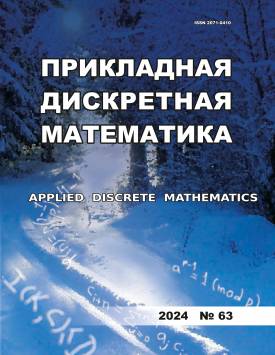The paper discusses an original approach to the analysis of network structures of various natures, which are represented in the form of graphs. It is assumed that the probability of connectivity of individual edges functionally depends on their physical characteristics (edge length) and tends to zero. The issue of increasing the connectivity probability of the entire graph is being addressed, which is defined as the probability of the existence of a sequential set of edges connecting the selected start and end vertices. A distinctive feature of the proposed method is the move away from the traditional reservation of obviously weak connection points towards a functional impact on individual connections of the structure, changing their physical characteristics. Based on the theory of systems functioning and the theory of dominants, contextual approach is being developed aimed at identifying the dominant connections of the graph, reflecting the functional and meaningful meaning of the connections between the vertices of the original modeled object. As a result, a set of dominants S is identified, consisting of edges whose parameters meet the given criteria. The selection criterion is the length of the edge included in the asymptotic relation, which characterizes the connectivity probability of the entire graph. It has been proven that changing the length of edges from a given set by ε > 0 increases the probability of connectedness of the original graph in the maximum case in h-ε or h-εβ times, where h → 0 and β is a parameter depending on the number of graph paths passing through this edge. Various methods have been proposed to increase the connectivity probability of the graph under consideration: from the point of view of the point effect, by reducing the length of a single edge from the set S; from the position of influencing the maximum set of edges from S, allowing to obtain the overall maximum effect. A comparative analysis of the proposed ways to increase the probability of graph connectivity has been carried out, and the appropriate conditions have been identified to achieve the maximum effect from the selected methods of influence.
Download file
Counter downloads: 71
- Title Contextual analysis of the bipolar structures connectivity
- Headline Contextual analysis of the bipolar structures connectivity
- Publesher
Tomsk State University
- Issue Prikladnaya Diskretnaya Matematika - Applied Discrete Mathematics 63
- Date:
- DOI 10.17223/20710410/63/6
Keywords
connectivity, bipolar network, set of dominants, network structureAuthors
References
Аксенов С. В. Организация и использование нейронных сетей (методы и технологии). Томск: Изд-во НТЛ, 2006. 128 с.
Богачев К. Ю. Основы параллельного программирования. М.: БИНОМ. Лаборатория знаний, 2003.
Воеводин В. В. Суперкомпьютеры: вчера, сегодня, завтра // Наука и жизнь. 2000. №5. С.76-83.
Воеводин В. В. Параллельные вычисления. СПб.: БХВ-Петербург, 2002.
Круг П. Г. Нейронные сети и нейрокомпьютеры. М.: МЭИ, 2002. 176 с.
Сoiling er J. L. High-performance neuroprosthetic control by an individual with tetraplegia / / The Lancet. 2012. V. 6736(12). P.61816-61819.
Culloch W. С. and Pitts W. Н. Logical calculus of ideas immanent in nervous activity // Bull. Math. Biophysics. 1943. V. 5. P. 115-119.
Hop field J. J. Neural networks and physical systems with emergent collective computational abilities // Proc. National Academy of Sci. 1982. V.79. P.2554-2558.
Hopfield J. J. Neural computation of decision in optimization problems // Biol. Cybernet. 1985. V. 52. P. 141-152.
Анохин П.К. Избранные труды: Кибернетика функциональных систем. М.: Медицина, 1998.400 с.
Ухтомский А. А. Доминанта. СПб.: Питер, 2002. 448с.
Ухтомский А. А. Доминанта: физиология поведения. М.: ACT, 2020. 117с.
Лосев А. С. Асимптотический анализ надежности стохастических сетей // Информатика и системы управления. 2008. №4(18). С. 101-105.
Цициашвили Г. Ш., Лосев А. С., Осипова М. А. Асимптотические формулы для вероятностей связности случайных графов // Автоматика и вычислительная техника. 2013. №2. С. 22-28.

Contextual analysis of the bipolar structures connectivity | Prikladnaya Diskretnaya Matematika - Applied Discrete Mathematics. 2024. № 63. DOI: 10.17223/20710410/63/6
Download full-text version
Counter downloads: 104